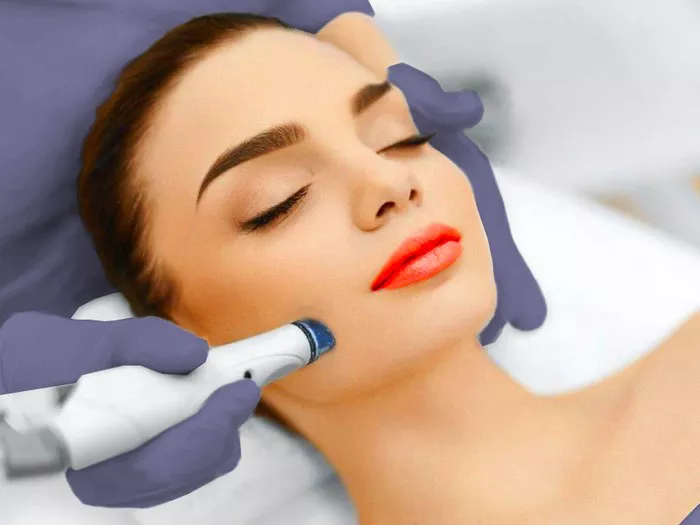Botox and microdermabrasion are two popular non-surgical cosmetic treatments that can significantly improve the appearance of the skin. Botox injections are commonly used to reduce the appearance of fine lines and wrinkles, while microdermabrasion is a gentle exfoliation procedure that helps improve skin texture and tone. However, patients often wonder whether these two treatments can be safely combined. In this article, we will explore the relationship between Botox and microdermabrasion, the appropriate timing for each treatment, and the considerations to keep in mind for a successful outcome.
Understanding Botox and Microdermabrasion
a. Botox: Botox is a purified form of botulinum toxin that temporarily relaxes the muscles responsible for causing dynamic wrinkles, such as frown lines and crow’s feet. The injections are administered directly into the targeted facial muscles, effectively reducing the appearance of wrinkles and providing a smoother and more youthful appearance.
b. Microdermabrasion: Microdermabrasion is a non-invasive exfoliation technique that involves the use of a handheld device to gently remove the outermost layer of dead skin cells. This procedure stimulates collagen production, improves skin texture, and can help reduce the appearance of fine lines, age spots, and mild scarring.
Can Botox and Microdermabrasion Be Done Together?
While Botox and microdermabrasion can both improve the skin’s appearance, they target different aspects of skin aging and work through distinct mechanisms. The combination of Botox and microdermabrasion is generally safe, but the timing of each treatment is essential for optimal results and to avoid potential complications.
Recommended Timing for Botox and Microdermabrasion
It is generally recommended to perform microdermabrasion before Botox injections. Microdermabrasion exfoliates the skin’s surface, and this can enhance the absorption of topical products, including Botox. By having microdermabrasion before Botox, the treatment area is better prepared, allowing for improved penetration of the neurotoxin into the targeted muscles.
If Botox is administered first and microdermabrasion is done shortly afterward, there is a risk that the exfoliation process may cause the Botox to spread beyond the intended treatment area. This could lead to undesirable side effects and affect the overall efficacy of the Botox treatment.
To ensure the best possible outcome, it is advisable to wait at least two weeks after Botox injections before undergoing microdermabrasion. This waiting period allows the Botox to take full effect and reduces the risk of any adverse reactions or complications.
Benefits of Combining Botox and Microdermabrasion
When performed sequentially and with the appropriate timing, the combination of Botox and microdermabrasion can yield several benefits:
a. Enhanced Results: Microdermabrasion can improve the texture and tone of the skin, enhancing the overall appearance of the treated area and complementing the effects of Botox.
b. Youthful Glow: Microdermabrasion promotes skin rejuvenation by stimulating collagen production, leading to a more youthful and radiant complexion.
c. Minimal Downtime: Both Botox and microdermabrasion are minimally invasive procedures with little to no downtime, allowing patients to resume their daily activities shortly after treatment.
d. Convenience: Combining both treatments in a single session can be convenient for patients with busy schedules, as they can achieve multiple skin-enhancing benefits in one visit.
Consultation with a Skilled Professional
Before undergoing any cosmetic procedure, including the combination of Botox and microdermabrasion, it is crucial to consult with a skilled and experienced medical professional. During the consultation, the healthcare provider will assess the patient’s skin condition, discuss their aesthetic goals, and create a personalized treatment plan tailored to their needs.
Patients should inform their healthcare provider of any previous Botox injections or facial treatments they have undergone. Open communication with the provider will ensure that the appropriate timing and approach are followed to achieve the best possible results and avoid any potential complications.
Conclusion
Botox and microdermabrasion are effective non-surgical treatments that can improve the appearance of the skin and combat the signs of aging. While both procedures can be performed independently, they can also be combined to enhance their respective benefits. For optimal results and to minimize the risk of complications, it is essential to have microdermabrasion before Botox injections, waiting at least two weeks after the neurotoxin treatment.
Patients interested in combining Botox and microdermabrasion should consult with a qualified medical professional to develop a personalized treatment plan that addresses their specific aesthetic concerns. With proper timing and expert guidance, the combination of these two treatments can provide patients with a refreshed and rejuvenated appearance, promoting confidence and a more youthful glow.

